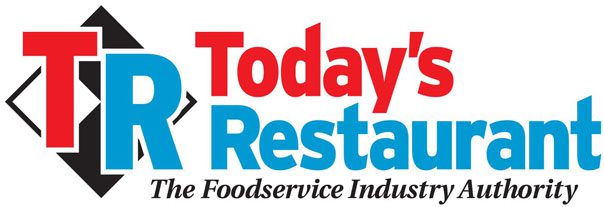
Restaurant Business Trends to Follow in 2021
By: Jay Bandy ~ President of Goliath Consulting
2020 has been quite a learning experience. From social distancing to customers wearing face masks, the COVID-19 pandemic has introduced us to new vocabulary and concepts never heard of in the restaurant industry: businesses had to sell grocery items and toilet paper during the quarantine, specialty menu items had to go due to supply chain issues and some indoor spaces had to be closed off to accommodate new safety measures.
This is now the new norm, and we know that some of these changes are here to stay. But now that you’ve learned everything the hard way, what can you do to plan ahead for the new year? Here are our best guesses for the business trends of 2021.
DESIGN:
It’s a new era of drive-thrus. Part of its upsurge comes from off-premise dining becoming widely adopted due to the pandemic, but there’s been an overall uptick in digital sales that’s helped drive-thrus gain significant traction. Brands like Starbucks are increasing their drive-thru prevalence to accommodate the demand for contactless orders. Domino’s launched their “Carside Delivery” Service nationwide this June which would allow customers to receive their online order without ever leaving their car. Del Taco has also been expanding its takeout and delivery channels, allowing the chain to keep company dining rooms closed to streamline the service modes more relevant to today’s guests.
Meanwhile, Chipotle is testing out new restaurant designs, and now have more than a 100 “Chipotlanes,” drive-thru stores where customers can pick up their digital orders. These pick-up lanes are also more profitable, said Jack Hartung, Chipotle’s CFO, adding that the lanes help “drive our high-margin digital order-ahead transaction.” He also has the numbers to prove his point: Digital sales at Chipotle accounted for 19.6% of total sales at the chain pre-pandemic, but in the first quarter, digital sales grew 80.8%, reaching a record $372 million, while digital sales accounted for 26.3% of total sales.
Drive-thru spaces aren’t the only thing businesses have been renovating, however. Architectural Digest writer Laura Itzkowitz, New York restaurants have seen a major expansion in outdoor dining space thanks to the Open Streets plan that “gives restaurant owners permission to expand their footprint onto the sidewalks and streets on the weekends provided they meet certain criteria.” According to David Rockwell, the founder and president of the restaurant Melba’s in Harlem, we can expect to see “more restaurants redefining the boundary between indoors and out. In the long run, restaurants will have to be adaptable, with seating plans that expand and contract easily and quickly.”
This flexibility will key as the cold season approaches. According to Guy Bloch, CEO of Bringg, a delivery orchestration software company, “an increased emphasis and more strategy behind the delivery and curbside pick-up is a smart consideration for restaurants right now, especially if they want to remain resilient during the colder months and continue to serve off-premises customers who may become a larger part of their base in cold weather”. Which brings us to the next point on deliveries.
DELIVERY:
Food deliveries have soared in the past couple of months. Popular third-party delivery apps such as DoorDash, Uber Eats and Grubhub have seen a stark increase in usage since the beginning of the pandemic, according to Seattle Times. For example, UberEats reported a 40% increase and GrubHub is up 24% from the same period the year prior
Decreasing on-premise sales, social distancing and the new work-from-home lifestyle have all contributed to consumers opting to have their food delivered than dining in. Back in March, a survey by Statistica showed that 41.7% of consumers in the United States were likely to purchase restaurant food delivery online if confined at home due to the coronavirus, and yet when Zagat conducted a similar survey in May (“The Future of Dining Study”) the result was a staggering 90% of consumers.
Not surprisingly, we’re seeing more operators are making the shift from third-party delivery to self-delivery; a quick search of food delivery options on google and various name brand restaurants pop up now actively promoting their own delivery options. Businesses like Dig Inn, Modern Market, IHOP, Panda Express have all launched self-delivery as a way to increase sales and meet the increasing demand for delivery. And not just because of the high commission rate either. While it’s true that third-party delivery service fees can be as high as 30% commission, having an in-house delivery service means they have more control over their drivers, reduce transit time, as well as increase customer service.
“We understand that convenience and value are what our guests need right now, so we’ve quickly adapted our marketing and business approach,” said Andrea Cherng, Chief Brand Officer at Panda Restaurant Group. “In order to provide quality meals at a value for families in our communities, we’re creating more regular promotions and speeding up our delivery-as-a service launch by half a year.”
TECH:
Social distancing and contact-free technology will be indispensable in 2021, as sanitation and safety concerns around COVID-19 remain. Aside from automatic doors, motion-activated faucets, touchless soap dispensers and paper towel dispensers, more hands-free options are likely to become increasingly implemented in the kitchen area, from touchless trashcans, doors, glove dispensers, sauce, to beverage dispensers.
A big part of the trend of automation for customers will revolve around new payment and menu alternatives. Payment solutions will have to change as well from conventional payment models of cash and plastic credit cards to contactless solutions such as EMV, tap and pay, and mobile wallets. And as more customers become sensitive to the use of plastic menus (The National Restaurant Association and CDC both recommend restaurants to use paper menus and discard them after each customer use), more will turn to contactless menu options like QR powered digital menus to comply with both demand and safety recommendations.
We also expect more businesses to embrace tech and AI to accommodate this upward trend of digitalization for customers. By more tech and AI we mean smart ordering via AI voice technology, self-order kiosks and tablets. AI-powered training, staff scheduling and smart inventory (via RFID tags) are also expected to grow and enhance all aspects of restaurant management.
CONCLUSION:
If 2020 was about reacting to the pandemic and learning ways to deal with the new changes, 2021 is going to be about the responding, as well as applying the hard-learned lessons to our businesses. That said, maintaining safety is still going to be the most important trend that operators will have to maintain and evolve. It will take some time to earn back the consumer’s trust in this issue, but operators who can incorporate these safety measures into their business model will be the first to earn them.
About Jay Bandy
As president of Goliath, Jay Bandy has the experience, the contacts and the tools to keep all the parts working together so you can achieve your goals – whether you’re looking to take a new concept from the idea stage to “Opening Day” or looking for long-term solutions to specific issues at your existing restaurant.
Jay has built a broad foundation of expertise during his 30 years in the restaurant industry. Currently he is a board member of the Georgia Restaurant Association, member of the Foodservice Consultants Society International and has previously served as an officer for the IFSEA (International Food Service Executives Association) in Atlanta. https://www.goliathconsulting.com/





Recent Comments